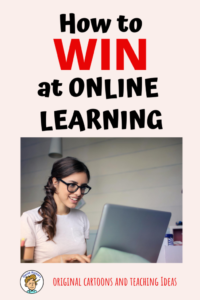

So it seemed natural that students could determine how they would like to be assessed by developing their own assessments. Their task was simple: I wanted them to tell how their author explored the theme of ____________ (the theme was their choice too.) How they demonstrated that knowledge was up to them.
I’ve been inspired by John Spencer and A.J. Juliani to foster creativity in the classroom by creating content using design thinking. Content is meant to be consumed by someone. It isn’t an essay. It isn’t a presentation, at least not one that’s delivered only to the students in the class. Content implies an audience that you want to reach with your work. And once you have an audience in mind, you have the motivation to create something special that isn’t a crappy Power Point or trifold display.
So how do you get them thinking beyond the types of alternative assessments that they’ve created in the past? Here are some tips:
Start working on the project from day one.
You don’t have to be finished with a novel to start generating ideas of what you’d like to do with it. Creating good content takes time, and there’s no reason why students can’t start developing ideas along the way. This also gives them a purpose for their reading as well.
Don’t show students examples of content.
Not unless you want to get a bunch of variations on what you show them. They need to trust – and you need to trust – that they will come up with good ideas on their own.
Ask them what they find themselves consuming when they want to learn something in their spare time. Or have them explore how people are already interacting with their subject matter and draw inspiration from there. They won’t be able to come up with something completely unique, so they need to steal the best ideas from what’s already being done.
Don’t use the word project. Use the word product.
“Project” indicates something that only exists inside the classroom. “Product” implies something that is for other people. It’s the difference between a book trailer that’s done for a presentation and a published YouTube video that everyone can see.
Students aren’t creating ideas for what they could do. They are actually doing it: creating a YouTube channel, a website or a blog that they are hoping a specific audience will connect with.
Hammer home the importance of audience.
Traditionally their audience is the students and teachers in the classroom, but what if you were creating content for other people? Like teachers that need ideas for teaching the novel? Students that have already read the novel?
We spent a few minutes one day brainstorming possible audiences. No suggestions were too outlandish. We did get silly ideas like “chimpanzees,” but we also found our way to some interesting concepts like “The Scarlet Letter For Scientists.”
Having a solid audience – and the more specific the better – is the best way to go from a good product to a great one. For example, one of my students is creating a playlist of songs to accompany her novel. This is a common ELA assignment that doesn’t require an audience beyond the teacher. However, her audience is teachers that are looking for ideas for how to use popular music in the classroom to get students more engaged with what they’re reading. With an audience in mind, her product went from a good idea to a great idea.
Have students show you a model of what they’d like to do.
I have students show me an example of what they are shooting for. Instead of just “I want to make a video” they tell me “I want to make a video like this.” It’s important for them to have a goal to shoot for to see how close they can come using the resources that they have available to them.
David Rickert is a high school English teacher in a suburb of Columbus, Ohio. He has been teaching for over 20 years and has taught virtually every grade and every subject. David is passionate about developing lessons that make difficult language arts subjects fun and engaging. He is also an author on Teachers Pay Teachers.




